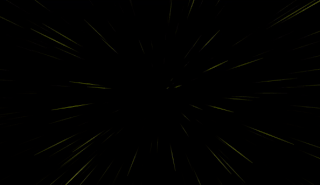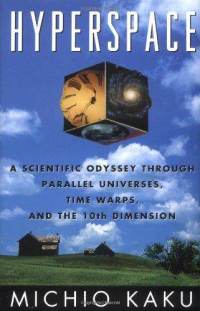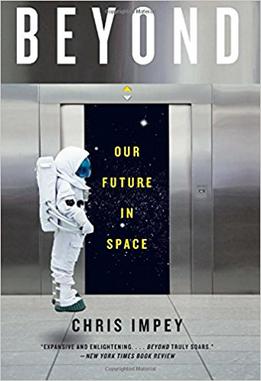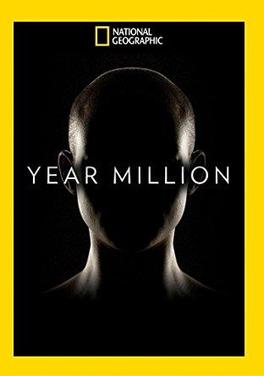
Michio Kaku is an American physicist, science communicator, futurologist, and writer of popular-science. He is a professor of theoretical physics at the City College of New York and the CUNY Graduate Center. Kaku is the author of several books about physics and related topics and has made frequent appearances on radio, television, and film. He is also a regular contributor to his own blog, as well as other popular media outlets. For his efforts to bridge science and science fiction, he is a 2021 Sir Arthur Clarke Lifetime Achievement Awardee.
The concept of self-replicating spacecraft, as envisioned by mathematician John von Neumann, has been described by futurists and has been discussed across a wide breadth of hard science fiction novels and stories. Self-replicating probes are sometimes referred to as von Neumann probes. Self-replicating spacecraft would in some ways either mimic or echo the features of living organisms or viruses.

Astrochicken is the name given to a thought experiment expounded by theoretical physicist Freeman Dyson. An Astrochicken is a small, one-kilogram spacecraft, a self-replicating automaton that could explore space more efficiently than a crewed craft could due to its innovative mix of technology.

In science fiction, hyperspace is a concept relating to higher dimensions as well as parallel universes and a faster-than-light (FTL) method of interstellar travel. Its use in science fiction originated in the magazine Amazing Stories Quarterly in 1931 and within several decades it became one of the most popular tropes of science fiction, popularized by its use in the works of authors such as Isaac Asimov and E. C. Tubb, and media franchises such as Star Wars.

Hyperspace: A Scientific Odyssey Through Parallel Universes, Time Warps, and the 10th Dimension is a book by Michio Kaku, a theoretical physicist from the City College of New York. It focuses on Kaku's studies of higher dimensions referred to as hyperspace. The recurring theme of the book is that all four forces of the universe become more coherent and their description simpler in higher dimensions.
Terraforming is well represented in contemporary literature, usually in the form of science fiction, as well as in popular culture. While many stories involving interstellar travel feature planets already suited to habitation by humans and supporting their own indigenous life, some authors prefer to address the unlikeliness of such a concept by instead detailing the means by which humans have converted inhospitable worlds to ones capable of supporting life through artificial means.

Asteroids, including those in the asteroid belt, have been suggested as a possible site of space colonization. Motives include the survival of humanity, and the specific economic opportunity for asteroid mining. Obstacles include transportation distance, temperature, radiation, lack of gravity, and psychological issues.

Parallel Worlds: A Journey Through Creation, Higher Dimensions, and the Future of the Cosmos is a popular science book by Michio Kaku first published in 2004.

Physics of the Impossible: A Scientific Exploration Into the World of Phasers, Force Fields, Teleportation, and Time Travel is a book by theoretical physicist Michio Kaku. Kaku uses discussion of speculative technologies to introduce topics of fundamental physics to the reader.

Physics of the Future: How Science Will Shape Human Destiny and Our Daily Lives by the Year 2100 is a 2011 book by theoretical physicist Michio Kaku, author of Hyperspace and Physics of the Impossible. In it Kaku speculates about possible future technological development over the next 100 years. He interviews notable scientists about their fields of research and lays out his vision of coming developments in medicine, computing, artificial intelligence, nanotechnology, and energy production. The book was on the New York Times Bestseller List for five weeks.

The Future of the Mind: The Scientific Quest to Understand, Enhance, and Empower the Mind is a popular science book by the futurist and physicist Michio Kaku. The book was initially published on February 25, 2014 by Doubleday.

Beyond: Our Future in Space is a non-fiction book by astronomer and professor Chris Impey that discusses the history of space travel and the future trajectory of human exploration of space. Impey's third popular science book for Norton was published as a hardcover in 2015.

The Science of Interstellar is a non-fiction book by American theoretical physicist and Nobel laureate Kip Thorne, with a foreword by Christopher Nolan. The book was initially published on November 7, 2014 by W. W. Norton & Company. This is his second full-size book for non-scientists after Black Holes and Time Warps, released in 1994. The Science of Interstellar is a follow-up text for Nolan's 2014 film Interstellar, starring Matthew McConaughey, Anne Hathaway, and Jessica Chastain.

A planetary civilization or global civilization is a civilization of Type I on the Kardashev scale. This type of civilization is likely to be reliant on renewable energy sources such as stellar power, as well as powerful non-renewable sources such as nuclear fusion. A Type I civilization's energy consumption level is roughly equivalent to the solar insolation on Earth (between 1016 and 1017 watts) – around 3 orders of magnitude higher than that of contemporary humanity (around 2×1013 as of 2020).

Life 3.0: Being Human in the Age of Artificial Intelligence is a 2017 non-fiction book by Swedish-American cosmologist Max Tegmark. Life 3.0 discusses artificial intelligence (AI) and its impact on the future of life on Earth and beyond. The book discusses a variety of societal implications, what can be done to maximize the chances of a positive outcome, and potential futures for humanity, technology and combinations thereof.

Year Million is a six-part documentary and science fiction television series produced by National Geographic, which premiered on May 15, 2017, on their channel. The series received two Emmy Award nominations, including a Primetime Emmy for its narrator Laurence Fishburne. The series is based on the 2008 book Year Million: Science at the Far Edge of Knowledge by Damien Broderick. The narrative alternates tells the story of a family of three in the future, using 2016 interviews to explain events unfolding in the story. The series was filmed in Budapest.

The God Equation: The Quest for a Theory of Everything is a popular science book by the futurist and physicist Michio Kaku. The book was initially published on April 6, 2021, by Doubleday.

Quantum Supremacy: How the Quantum Computer Revolution Will Change Everything is a non-fiction book by the American futurist and physicist Michio Kaku. The book, Kaku's eleventh, was initially published on 2 May 2023 by Doubleday. The book concentrates on quantum computing and its uses for various tasks.

A City on Mars: Can We Settle Space, Should We Settle Space, and Have We Really Thought This Through? is a 2023 popular science book by Kelly and Zach Weinersmith. It covers the current state of knowledge of space settlement given changes in the economics of space travel in the 2010s and 2020s, with a particular focus on challenges that the authors consider unresolved or underestimated. The book is illustrated with Zach Weinersmith's artwork; he is known as the creator of the webcomic Saturday Morning Breakfast Cereal.

















